To help you familiarize with the Agilitest environment, here is a presentation of the various elements that makes up the Agilitest editor.
.png)
Project management menu
.png)
This menu is situated at the top left of the editor. It allows you to create a new project, to open a git clone, to open a project already in use, to create a new component and to save files on which you are working on.
Create a new component

When you create a new component, Agilitest provides a selection of different types of component :
Create ATS script: To create a new test or a subscript**.**
Create CSV file: To create a data file in order to test various data (Data Driven Testing).
Create a JSON file: To create a data file in order to test various data as well.
Create Java script: To call a Java code extern to Agilitest.
Create execution: To create an execution of your tests to manage the review of all your tests from a project that can be filtered with multiples parameters.
Configuration and help menu
.png)
This menu, situated at the top right of the editor, allows you to:
- Take screenshots of your editor directly from Agilitest
- Have access to the settings of Agilitest
- Have access to the tools that can complete Agilitest
- Search for a script in particular in the editor
- Have access to the help menu
Agilitest settings
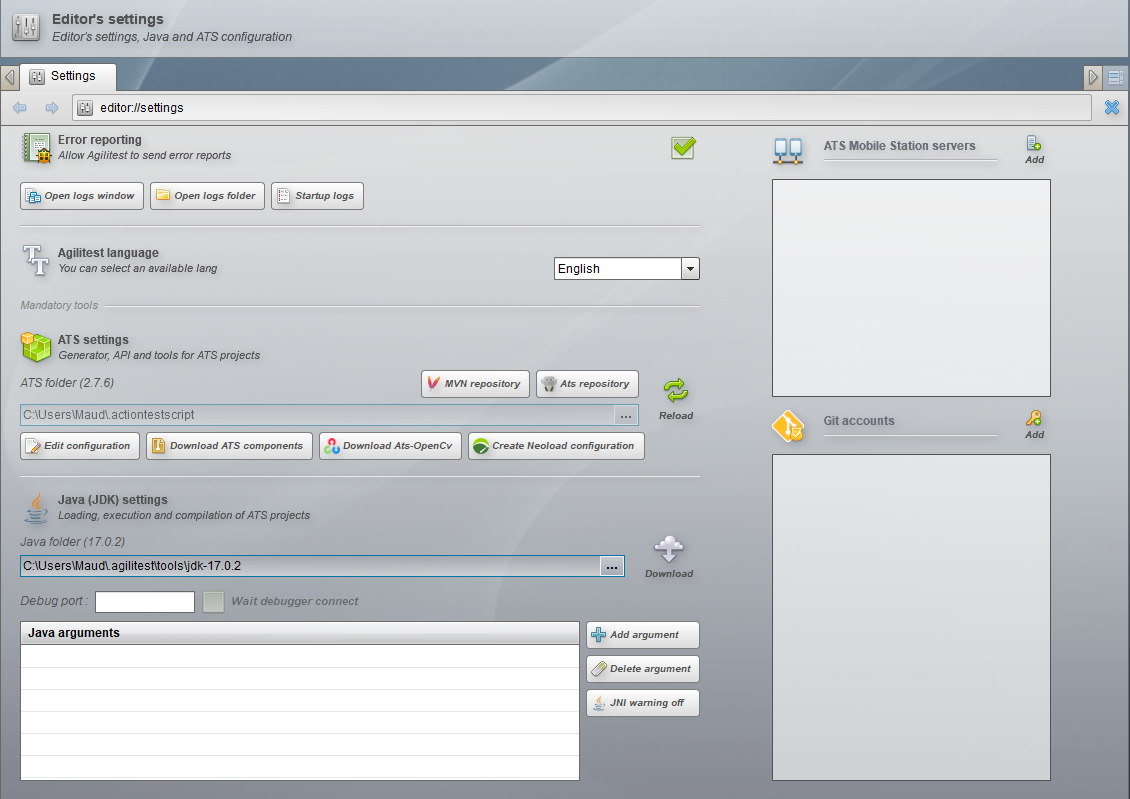
Agilitest settings allows you to:
- Generate error reporting
- Parameter the lanugage of the Agilitest editor (french or english)
- Configure ATS
- Configure Jenkins
- To connect Mobile Station or Git accounts
Tools menu

You can improve your experience by adding tools that communicate directly with Agilitest. Among those tools there are:
- Jasper Report
- Apache Maven project management
- FlaUInspect
- Jenkins server
Help menu

From the help menu you have access to:
- Agilitest archive download link
- Mobile Station download links (Windows and MacOS)
- Player ATSV download link
- Various resources to support your path on Agilitest (documentation, videos, webdrivers, etc…)
Project explorer
.png)
The project explorer is a structure tree that lists all the projects and elements they are composed of.
It allows you to have a global view of a project and to bring global modifications as well as to limit the step-by-step method.
From the project explorer’s menu you can modify the view of the tree.
.png)
To know more, you can consult the documentation about the project explorer.
Channels management
Channel management menu is a prerequisite before you start editing a test, it is a central element of Agilitest and that will facilitate the test creation and maintenance.

In this channel management menu you have access to:
- The Capture tool button
- The Close button to close the current channel
- The Play button to play the script
- The Next button to play an action and the following one
- The Parameters button to set up the execution management
Script’s variables
The script’s variable menu allows you to create and visualize all the variables that are used in a script.

This is to avoid having the variables in the script’s core that is only made for actions.
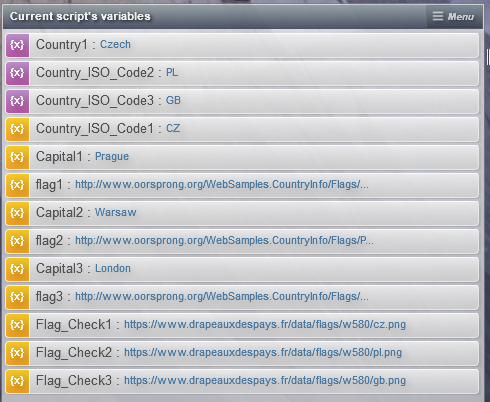
Scripts management
Actions menu

The Agilitest actions menu is central and allows you to manually declare all the possible actions in a test script.
In this menu you will find all the agiles actions that are used during a test. It was made to secure the most compatibility between all the devices supported by Agilitest.
This menu is also used to manage different channels used in a test.
Script editor
Agilitest script editor represents a big part of the editor. It shows the actions you can execute on your tests. The editor will propose graphical interpretations of the actions that will be performed on your script. The ATS format is a textual format that will describe all its actions.
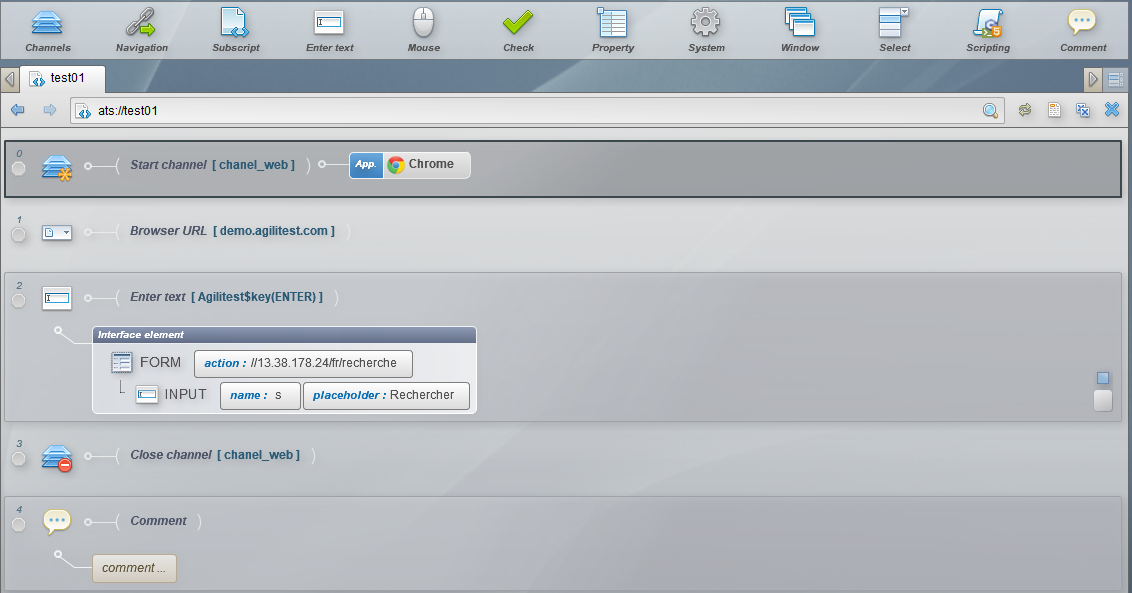
This section of the editor is designed to allow the reuse of components: copy of the actions or elements on which they act on or with subscript creation.
The actions display only shows the principale actions, but all cases can be managed in sub-menu.

Script header
The script header menu is used to manage a set of metadata linked to a test, like execution suite for example.
To have access to the script header, open a script and click on the “Script’s header data” button

You can visualize the ATS script corresponding to your test.
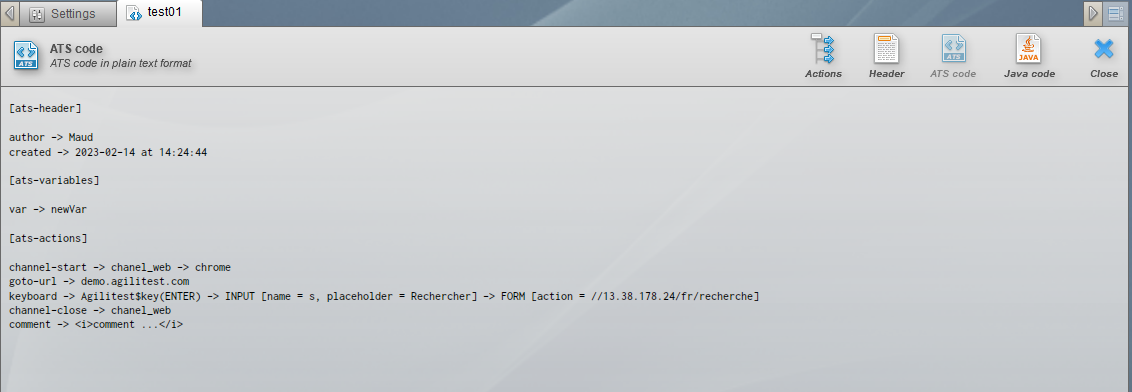
💡 Tip
This can be useful to copy the information from the script’s header and send it by email or add it to a comment in your bug tracking tool.
You can also have access to the Java code which once it is compiled will allow the execution of the tests.
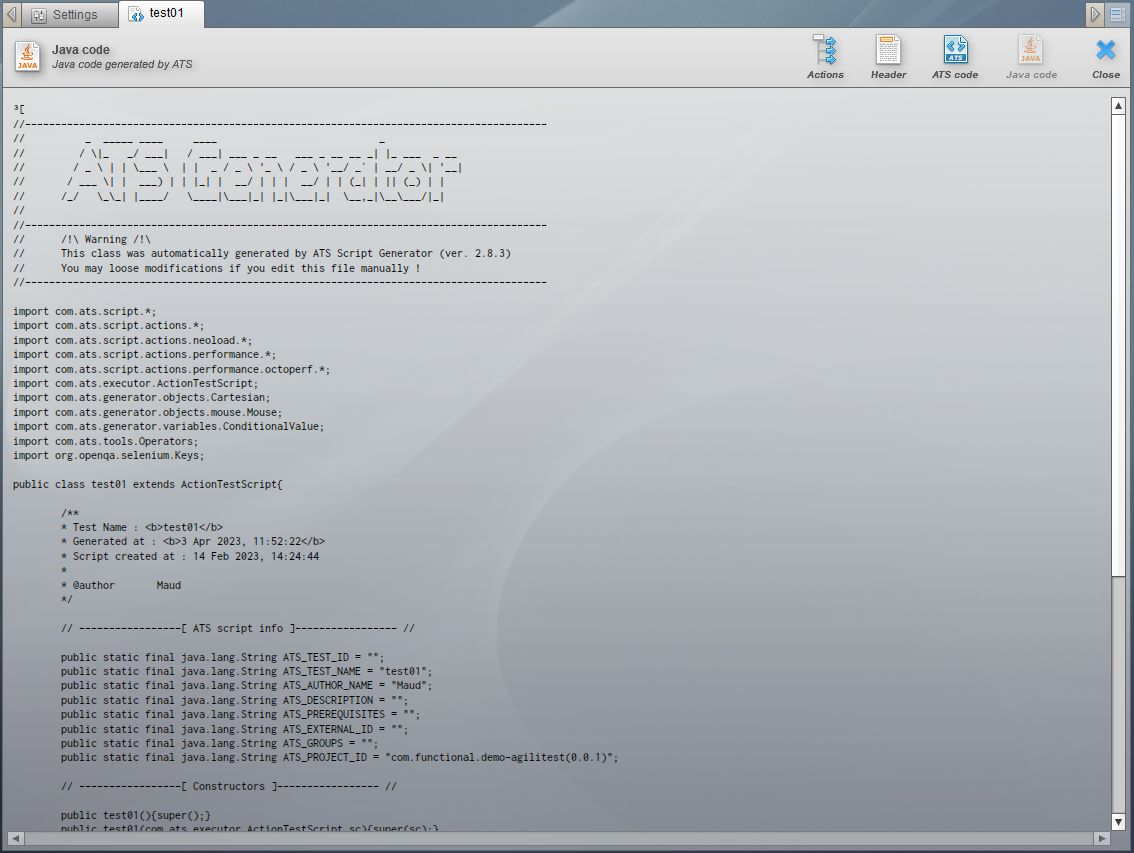
🔸 Warning
ATS and Java scripts cannot be edited directly in the editor.
To return to the script editor, click on the "Actions" button



